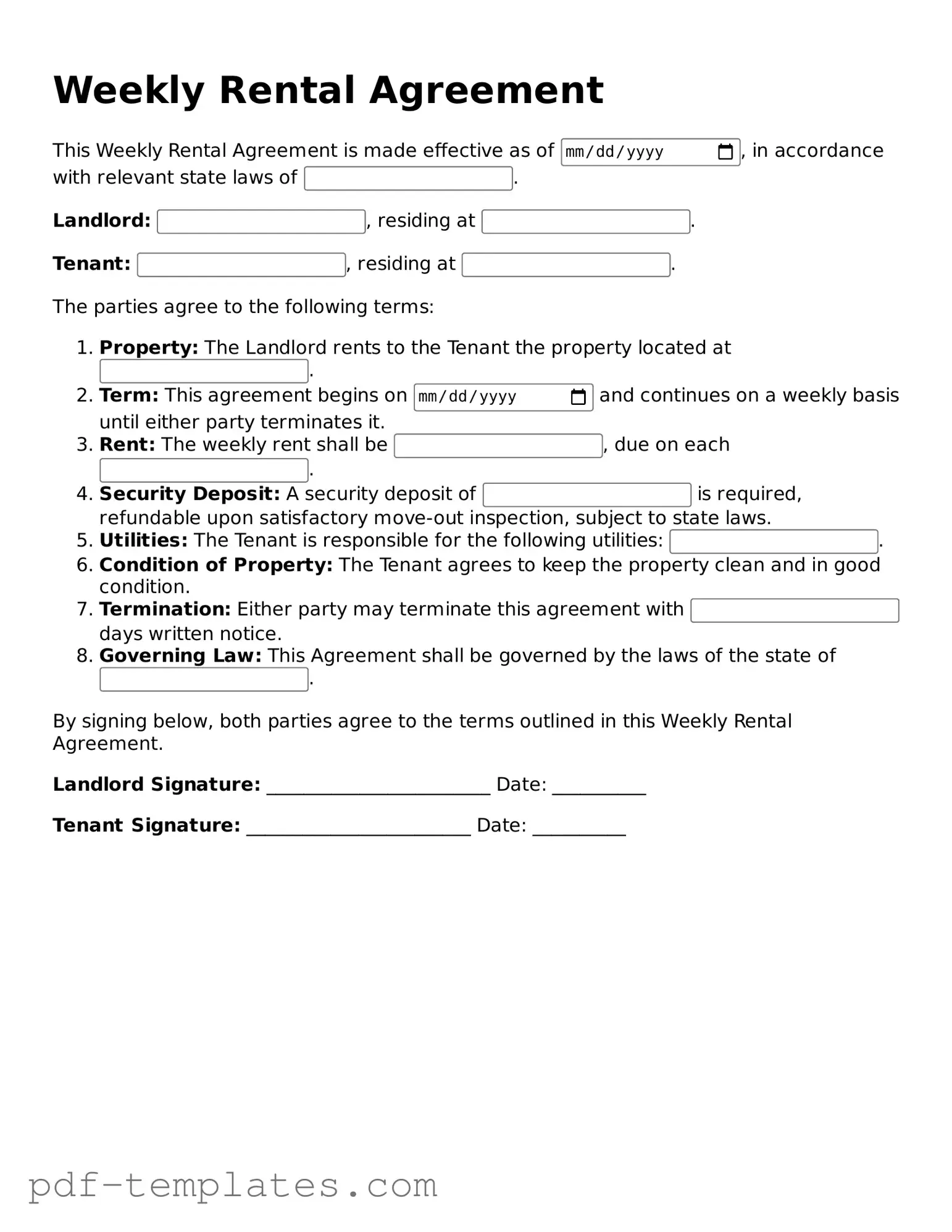The Weekly Rental Agreement form shares similarities with the Lease Agreement, which is a more long-term contract between a landlord and tenant. Both documents outline the rights and responsibilities of each party, including rent payment terms, maintenance obligations, and rules for the property. However, while a Lease Agreement typically spans several months or years, a Weekly Rental Agreement is designed for shorter stays, often catering to transient tenants or vacation rentals.
Another document that resembles the Weekly Rental Agreement is the Month-to-Month Rental Agreement. This type of agreement allows tenants to occupy a property with a flexible arrangement, requiring only a month’s notice to terminate the lease. Like the Weekly Rental Agreement, it specifies rental terms, payment schedules, and conditions for terminating the agreement, but it offers a longer duration than the weekly option.
The Rental Application form is also akin to the Weekly Rental Agreement, as it serves as a preliminary step in the rental process. While the Weekly Rental Agreement formalizes the rental terms, the Rental Application gathers essential information from potential tenants, such as employment history and creditworthiness. This document helps landlords assess whether a tenant is suitable for the rental property.
In addition, the Security Deposit Agreement is similar in that it addresses the financial aspect of renting. This document outlines the amount of the security deposit, conditions for its return, and reasons for possible deductions. Both agreements aim to protect the landlord’s investment, but the Security Deposit Agreement focuses specifically on the financial security provided by the tenant.
To further understand the distinctions and similarities among various rental agreements, including the Lease Agreement, it is beneficial to read more about the form as it provides insights into the legal protections and responsibilities for both landlords and tenants.
The House Rules document can also be compared to the Weekly Rental Agreement, as it sets forth guidelines for behavior and use of the property. While the Weekly Rental Agreement covers the legal terms of the rental, the House Rules detail expectations regarding noise, cleanliness, and other communal living standards. Both documents work together to ensure a harmonious living environment.
The Move-In/Move-Out Checklist is another document that shares similarities with the Weekly Rental Agreement. This checklist serves as a record of the property’s condition at the time of a tenant's move-in and move-out. It helps both parties document any existing damages or issues, thus protecting the landlord from unjust claims regarding the security deposit. While the Weekly Rental Agreement establishes the rental terms, the checklist focuses on the physical state of the property.
Lastly, the Addendum to Lease Agreement can be compared to the Weekly Rental Agreement, as it allows for modifications or additional terms to be added to an existing lease. If specific conditions need to be addressed that are not covered in the main agreement, an addendum can clarify those points. Like the Weekly Rental Agreement, it is a legal document that must be agreed upon by both parties, ensuring that all terms are clearly understood and accepted.
